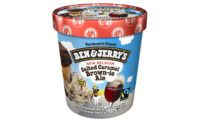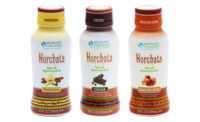

The list of innovations goes on outside the category and many of the examples below are innovative packaging formats that would work great for dairy products. At PTIS, we call this “Search and Reapply.”
There are a number of new package formats that are making a difference for consumers both functionally and aesthetically:
• Gum in blister packs really changed the category, and this is now a very common format. This package improved “bill boarding” at the shelf, and the easy pop-out blisters provided added consumer convenience.
• Campbell’s microwavable Soup-at-Hand is another example of enhanced consumer convenience, and it is selling very well. Regular condensed soup is $.69/can and Soup-at-Hand is $1.69-yes, consumers will pay for convenience.
• Canisters continue to be popular. You can now find paint, coffee, and sugar in large plastic canisters. These are great for consumers; they add convenience and freshness. For the retailers, these packages provide excellent shelf impact.
Microwave is really heating up! There must have been 10 new microwave packaging solutions at the FMI show in Chicago recently. The package formats ranged from stand-up flexible pouches (SUP’s) with cool-to-touch and self-venting convenience features to Cryovac’s new Simple Steps rigid and flexible plastic complete meal solutions. Heinz recently introduced a novel paperboard, dual susceptor package that actually browns/crisps the fries. Another microwave solution for cooking deep-dish pizza was developed by Kraft for its DiGiorno line. Another great innovation was the result of perfecting easy squeeze, leak-proof valves on closures. Products across categories are now using these closure systems for upside down containers. Common examples include ketchup and squeezable salad dressings.
Tetra-Pak continues to make good progress with the Tetra Prisma aseptic package for beverages in many categories, including wine, milks, and nutritional drinks.
Self-heating coffee packages from Wolfgang Puck provid added convenience, but were pulled off the market for technical reasons; look for this technology to come back in the next few years. DuPont’s Cool-to-Go/Cool Guard insulated label technology is being used by LaBatts for beer and, yes, it really does keep the beer colder longer.
And, there is a new technology recently introduced in New Zealand that is a patented single-serve, squeezable cup for yogurt called Crush Pak. The cup has vertical ridges. Simply squeeze the cup together and the product comes out the top.
Most of these examples fit a variety of dairy products. The key is to look outside your category for new ideas, and to recognize the value and importance of packaging. It really is the new product enabler. n
PTIS is a leading packaging consultancy that provides sustainable packaging workshops and strategy development. For more information, go towww.pti-solutions.com.




